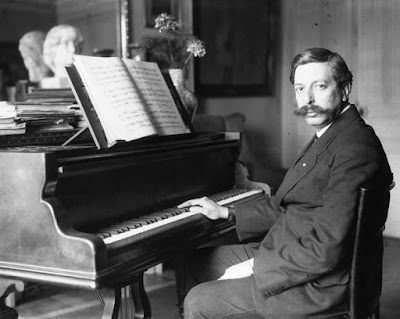I enjoyed the first two thirds of this book immensely, so much so that I was prepared for a time to give it 5 stars. Compared to Eco’s other novels I have read (especially Foucault’s Pendulum, which is exceedingly dark), this one is overwhelmingly filled with brilliant luminosity: sunlight, tropical seas, starry expanses, and poetic reverie. Eco’s strengths as a masterful writer – his ability to coin memorable phrases and to turn the page into a canvas filled with richly compelling and imaginative verbal imagery – are on display here as much as ever, and are indeed a source of much fascination and delight. As a philosopher, historian, and literary scholar, his encyclopedic weaving of threads and themes from virtually all across creation, interacting with them most playfully all the while, is likewise once again a standard feature. He manages to touch upon philosophy (especially Desartes), science (astronomy/cosmology, botany, ornithology, psychology), religion and theology (e.g. creationism vs. some form of materialism/evolution; predestination and free will; The Song of Solomon), history (the obscure and complicated machinations of European politics of the 1600s, in southern France and northern Italy most especially, figure heavily into this story, and at least two historical figures, the Cardinals Richelieu and Mazarin, are featured as minor characters), linguistics, poetry (especially the significance of metaphor; John Donne and the Metaphysical Poets get many nods), navigation, timekeeping, and much more during the course of these 500-plus pages, all filtered through the lens of seventeenth century European society and its concerns and obsessions. (With regard to the sciences and to timekeeping, the overarching plot device involves the quest for the discovery of a reliable means for calculating longitude. As a prerequisite for comprehending much of what is going on in that regard, this book, also published around the same time as this novel, is highly recommended.)
A parade of vividly rendered characters come and go, most memorably: Pozzo (the protagonist’s colorful father, whose abrupt demise sets up a recurring theme of sudden death and irresolution), Padre Emanuel (a fatherly priest who has constructed an elaborate machine for systematically generating and cataloging metaphors), Monsieur Saint-Savin (swashbuckling courtier and provocative religious skeptic, an evocation of Cyrano de Bergerac), and Father Caspar (an eccentric elderly Dutchman of the Jesuit order who is also an astronomer, inventor, and would be apologist for Scriptural literalism in the face of ascendant scientific skepticism). Overarching themes explored (also recurring to some extent in Eco’s other novels) include the blurred boundaries between science and superstition and between imaginative brilliance and delusional madness. Regarding the former pairing: we children of the Enlightenment think of these as polar opposites, as diametrically-opposed – and irreconcilable – as east and west, but Eco, with clever subtlety, calls this assumption into question with considerable effectiveness. The distinctions between, say, astrology and astronomy or alchemy and chemistry, were not at all clear prior to the seventeenth century. Nor are they nearly as clear today as we would like to pretend. Consider that Newton disliked his own Theory of Gravitation because it involved the “myth” of bodies acting upon one another from a distance, which smacked of a reversion back to some sort of Dark Age sorcery. But (Einstein’s Theory of Relativity notwithstanding) we’re still stuck with it today as the most reliable explanation available – one which satisfactorily explains the observed phenomena while enabling us to successfully navigate interplanetary space. And upon further reflection, in this light, should the fact that serious experiments were conducted by rational men in the seventeenth century involving things such as the Powder of Sympathy really strike us as utterly ridiculous?
* * * * * SPOILER ALERT ! * * * * *
My primary complaint against Eco here involves his use – or, more properly, misuse – of the narrative arc and expectations pertaining thereunto. This is not altogether unique to this novel. Eco likes to mess with his readers. For example, he reportedly gave a deliberately slow start to his debut (and most famous) novel, The Name of the Rose, not only as a metaphorical representation of what the two main characters are experiencing at the beginning of the story, as they perform the arduous ascent up to the mountaintop monastery which serves as the tale’s setting, but also as a means of “sloughing off” readers of a more lazy disposition, whom he considered unworthy of what he had in store. But that kind of tinkering is more than forgivable when it occurs early in the book, involves only a chapter or two, and has adequate justification. About two thirds of the way through The Island of the Day Before (after the presumed death of Father Caspar in Chapter 25 and the lengthy meditation on the meaning of doves in Chapter 26 – the last truly delightful extended passage in the book, in my opinion), I began to suspect that the reader was being set up, and that Eco had no intention of bringing this story to anything resembling a remotely satisfying resolution. And in this suspicion, I was, regrettably, proved correct. Again, Foucault’s Pendulum also features a conclusion which presents way more questions than answers, but it all seems even more pronounced and less forgivable here, if only in the spirit of “fool me once…” and for no other reason.
But there are other reasons. The last chapter of the book involves some extended riffing on Donne’s poem A Valediction: Forbidding Mourning. I grant that it’s kind of clever, on the one hand, but it also feels a bit . . . overdone. (Heh, see what I did there?) At any rate, it’s definitely not worth the high price paid (in terms of pages) to arrive at such an underwhelming destination. It also makes me wonder: if the rest of the 500-plus page book (or at least the latter third, which, as mentioned, has far fewer memorable passages and on the whole has the feel of a rather disjointed ramble among one speculative excursus after another) was conceived largely as an excuse for a gradual convergence upon this very odd concluding conceit, it seems a rather inconsiderate joke to have played upon the reader. This one, at least, found it difficult to laugh.





















